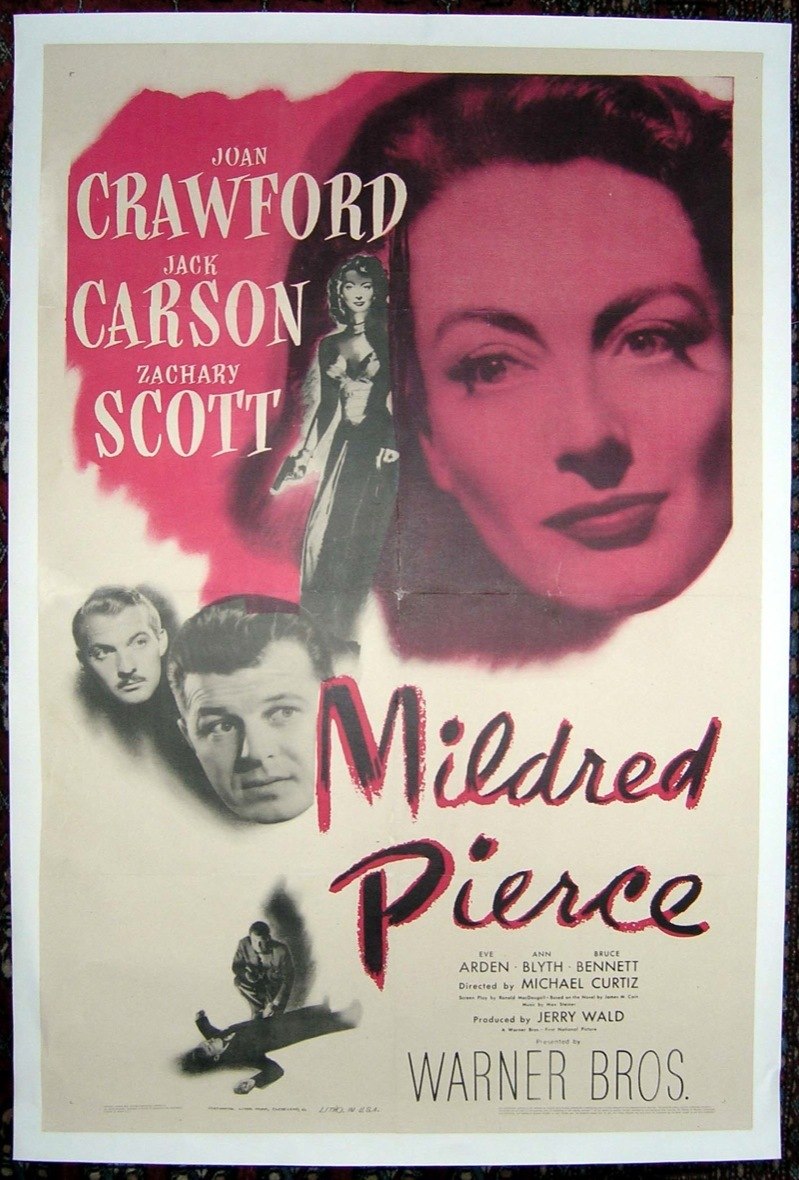Mildred Pierce, a woman who loved her daughter more than any man.
First scene: a room in a swanky beach house, dark shadows, gun shots. A man staggers into camera space and falls face up. A woman’s silhouette on the wall. Next scene: a woman—the same woman?—walks a pier, looking forlornly into the water below. A policeman approaches her. “If you take a swim,” he says, “I’ll have to take a swim. Is that fair?”
Thus Mildred Pierce begins—not a beginning arrived at easily. The troubled screenplay involved no less than nine interim writers, various approaches, good and bad characters exchanging roles and motives, a fluctuating plot, with and without a murder. William Faulkner’s elaborate narration was rejected.
Final screen credit was given to Nanald MacDougall, who created the flashback, if not original per se and a favorite device of film noir, then a key element in this film. Mildred Pierce, however, emerged largely true to the novel. MacDougall’s final screenplay, in addition to the flashback, did add a murder and a worse than originally written daughter. His writing was evasively slick enough to please the censors, who, in the beginning, had objected to the story’s “many sordid and repellent elements.”
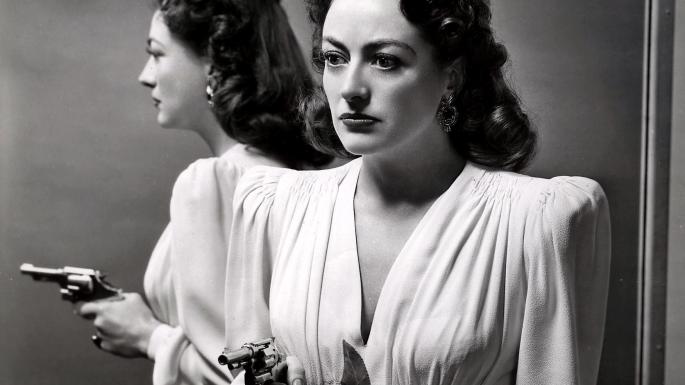 The source novel’s author, James M. Cain, had taunted, teased and tested the censors—in Double Indemnity (1944), The Postman Always Rings Twice (1946) and Out of the Past (1947), based on Cain’s Build My Gallows High—but, each time, enough “Cain flavor” remained in tact to make for often malicious, always sensational screen entertainment.
The source novel’s author, James M. Cain, had taunted, teased and tested the censors—in Double Indemnity (1944), The Postman Always Rings Twice (1946) and Out of the Past (1947), based on Cain’s Build My Gallows High—but, each time, enough “Cain flavor” remained in tact to make for often malicious, always sensational screen entertainment.
The actress who played Veda, Mildred’s naughty, two-timing daughter, the then sixteen-year-old Ann Blyth, was one of many of director Michael Curtiz’s discoveries. He insisted she was right for the role, though Warner Bros. initially resisted, as she was under contract to Universal, which would mean an expensive loan-out, and the smallest expense was excessive to Jack Warner. Curtiz coached Blyth meticulously, as he did so many young stars in whom he saw potential, making her a convincing nasty on screen.
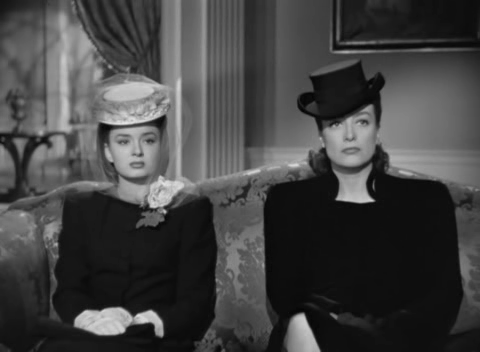 Quite differently, at first the director brought Joan Crawford to tears more than once. He didn’t want this “has-been” actress whose career had dipped appreciably from its earlier heights. In the course of filming, he changed his mind, realized she was rather good as Mildred and had a part in guiding her toward an Oscar for Best Actress.
Quite differently, at first the director brought Joan Crawford to tears more than once. He didn’t want this “has-been” actress whose career had dipped appreciably from its earlier heights. In the course of filming, he changed his mind, realized she was rather good as Mildred and had a part in guiding her toward an Oscar for Best Actress.
With all the trappings of a film noir, Mildred Pierce is a tawdry story of people at odds with one another and with themselves. The only truly admirable character is Mildred herself, though she, too, is not without blemish. After her divorce from weak, out-of-work first husband (Bruce Bennett), she centers her life around her two daughters (Jo Ann Marlowe in addition to Blyth). She decides to take a chance on providing for them by starting a restaurant. When the one restaurant prospers, she expands into a chain.
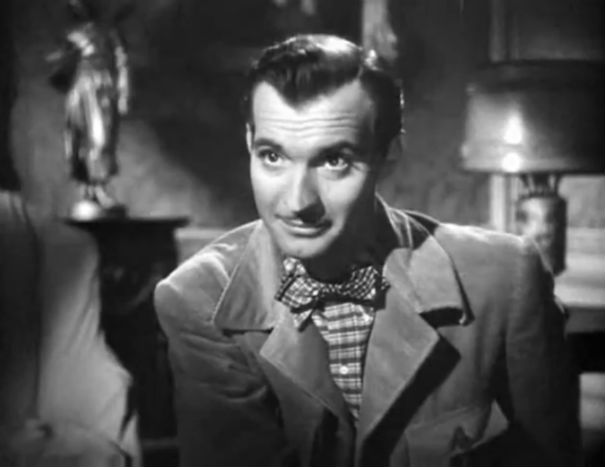 While all the while dealing with a sleazy real estate agent (Jack Carson) who makes subtle passes at Mildred, along comes Monte Beragon (Zachary Scott). Like a rat to cheese, he is drawn to Mildred’s new-found wealth. For some reason—a character flaw of Mildred’s or an unrealistic script necessity?—she agrees to marry him, giving him a third of her business.
While all the while dealing with a sleazy real estate agent (Jack Carson) who makes subtle passes at Mildred, along comes Monte Beragon (Zachary Scott). Like a rat to cheese, he is drawn to Mildred’s new-found wealth. For some reason—a character flaw of Mildred’s or an unrealistic script necessity?—she agrees to marry him, giving him a third of her business.
Always willing to do anything for money, Veda claims she’s pregnant by a wealthy married man (John Compton) and blackmails him for $10,000. Of course she isn’t pregnant. Before long, Mildred begins to suspect that Veda’s promiscuity now extends to Monte and goes to his beach house to confront him.
Soon after the walk on that pier, she goes to the police and confesses to Inspector Peterson (Moroni Olsen) that she shot Monte Beragon. And it is from this point, in flashback, that much of the story unfolds. But did she kill Beragon? …
Mildred Pierce is Michael Curtiz through and through, with his trademark shadows galore—suggestive of calamity, menace, suspense and tension—but also, it seems, shadows for their own sake, at every opportunity.
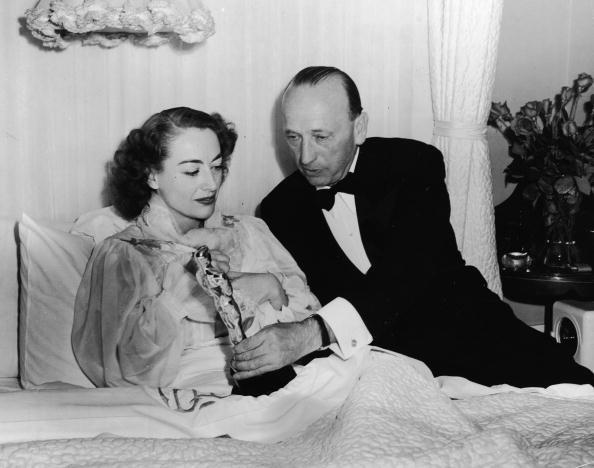 Curtiz, known for his imaginative lighting and slick camera moves, worked closely with cinematographer Ernest Haller to give the picture its deep, dark, jaundiced noir look. The camera work, shadows and the multi-level interior are especially frightening and claustrophobic in the opening scene, when Jack Carson apparently stumbles upon the body and finds himself locked in the beach house, which was the director’s own.
Curtiz, known for his imaginative lighting and slick camera moves, worked closely with cinematographer Ernest Haller to give the picture its deep, dark, jaundiced noir look. The camera work, shadows and the multi-level interior are especially frightening and claustrophobic in the opening scene, when Jack Carson apparently stumbles upon the body and finds himself locked in the beach house, which was the director’s own.
Haller, one of the greats in his field, had shared an Oscar with Ray Rennahan for Gone With the Wind (1939) and was nominated for Jezebel (1938), Lilies of the Field (1963) as well as for Mildred Pierce, and three other films.
Know equally well for working with Crawford, Haller shot more Bette Davis films than the distant runners-up, Tony Gaudio and Sol Polito. “Ernest Haller had always been my favorite cameraman,” Davis commented. “I never told him what to do, but I put my trust in him to do what he knew how to do, to make me look my best.”
Mildred Pierce is one of Max Steiner’s less effective scores. Perhaps he sensed this. On several occasions, both in the score itself and on a phonograph record, he incorporates “It Can’t Be Wrong,” the song from his Now, Voyager (1942) score.
[embedyt] https://www.youtube.com/watch?v=KoOr_OoHbv4[/embedyt]
